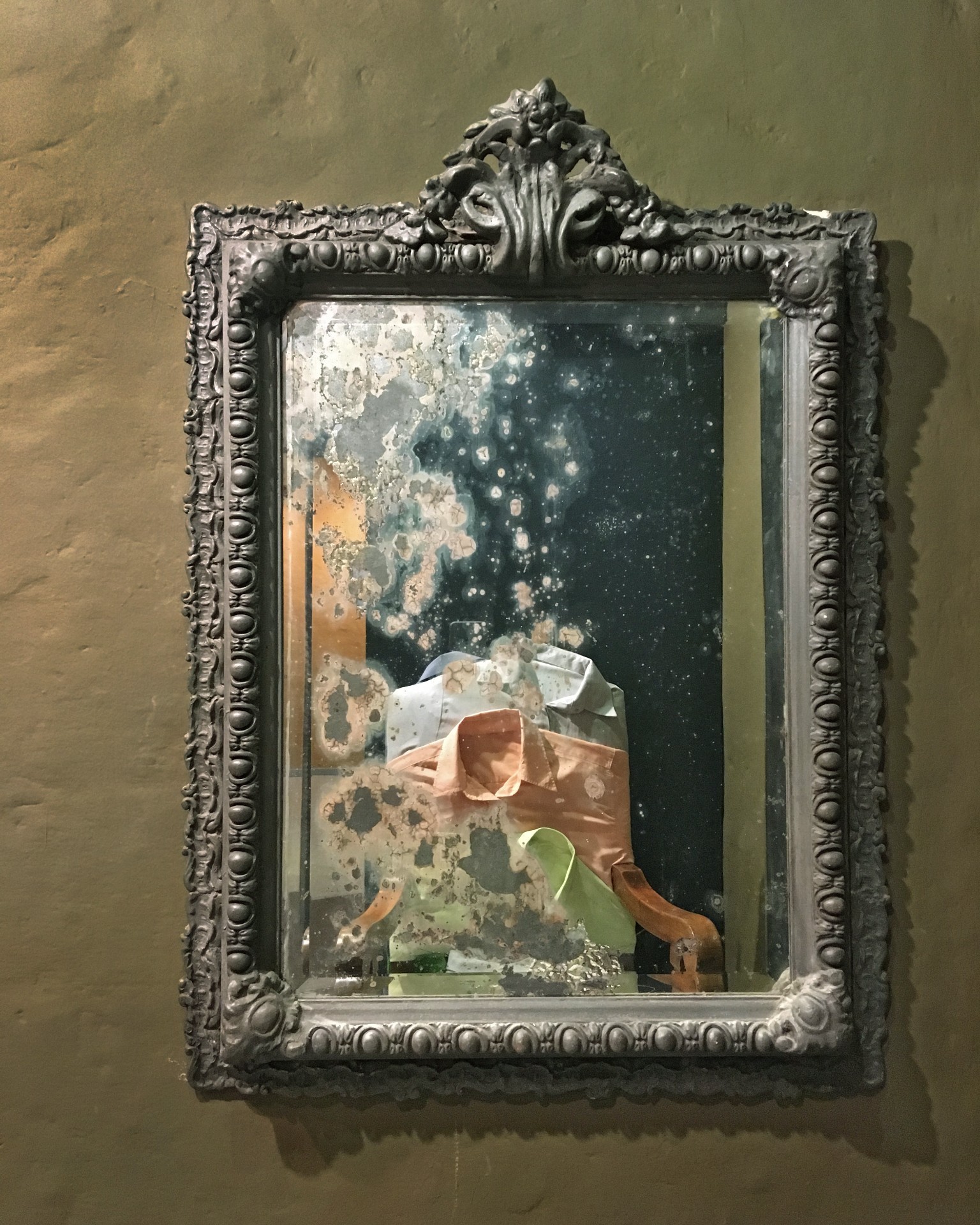The island
Chair upholstered with used male shirts
2019
The insular can be thought of as that separation of a part, based on a certain totality—based on a continuity—so that the exceptional, the different, emerges. But there is also the possibility that this totality, although partially disintegrated from a whole, is a kind of proliferation of the identical. In strictly geological terms—and also symbolic—there are, in fact, different types of island formations: let's think with Deleuze, broadly speaking, of two: the original islands, which emerge from the interior of the earth and exceed the aquatic boundary forming new portions. Of surface; or derived islands, fragments of continental plates that, in their movement, remain behind, solitary in front of a receding matrix, although they may remain connected to it in the depths.
Not infrequently in a negative key, other times idealizing, the idea of isolation has accompanied representations of Paraguay. Among these, the phrase “small island surrounded by land” popularized by Augusto Roa Bastos in multiple texts and public speeches stands out; an expression already hegemonic today that, it must be clarified, is not a strictly Roabastian creation, but rather a common one, that is, of several creators who arrived at that ordinary signifier.
In her installation object The Island (2017), Claudia Casarino takes up that space mapped by the metonymic metaphor of insular Paraguay and transfers it—this time in a quasi-Roabastian key—to a reflection on power, and more specifically, the character of artifact in the construction of power, as well as the blind self-absorption to which this would result. The installation consists of a seat facing a mirror. The wood and foam armchair is upholstered with men's shirts, marked by their use; like the precarious shirts of public officials or humble and middle-class militants—could it be thought that a certain neatness is accessory, or a luxury?—are, ultimately, work shirts: polychrome, in pastel tones, soft, faded, perhaps exhausted Familiar with speculation around the semiotics of clothing – with forms that refer to the meaning of gender construction or class strata – Casarino combines in this installation that concern with the symbolic nature of furniture. Frequently, the chair becomes a ritual symbol of power. Prosthesis that the designer Ricardo Blanco called "that antigravity element", this everyday piece of furniture not only contains the weight of the body and separates it from the ground, preventing its contact with it - that is, isolating it - but also makes the subjects quadrupedal. bipeds that rest or work on it; and, sometimes, it becomes a metonymy of the body: the vacant chair will always be the other name of an absent person or the space that one hopes to occupy to settle not only the body but the potentialities.
The island of Casarino is covered with shirts that, lent to the service of this prosthesis, have declined their primary function: they can no longer be worn. Empty chair with vacant and headless shirts, the artist names through this coverage two subterfuges that the elitist power resorts to: on the one hand, the political forces of the popular sectors, contributors of their energy and vitality to a vampiric power that absorbs and instrumentalizes; on the other, the image of the popular itself, with which a particular class dresses—that is, disguises itself—to conceal its class identity without betraying it.
What is an armchair facing a mirror if not the intensity of self-contemplation? Caught in this confrontation between identity and the identical, power could seem stable, oblivious and unperturbed by any interference from the outside. The blind power. Island illness would consist, then, in the impossibility of seeing beyond identity, beyond this solitary dance of power between the self and its double.
But mirrors are artifacts with an expiration date; Like identities, like bodies, time operates transformations and deteriorations on them. Time and action can lead to breaking the self-absorption of power, its pretense of fixity; either by decomposing the device of representation, or by invading the restricted space of representation with one's own image, or by revealing the corrupt nature of power clothed in the people.






